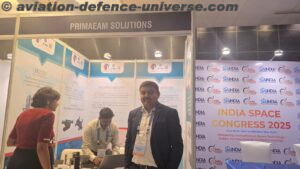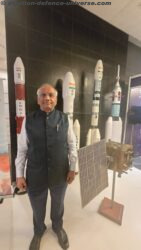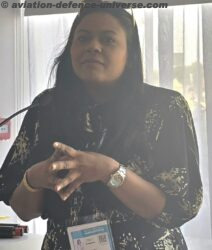
New Delhi. 29 July 2020. “The aerospace industry in India has a growing commercial aviation market combined with large defence investments in the world. Major global aerospace companies have already made their presence here for their R&D activities. Domestic government organizations have a number of prospective projects to help meet the country’s aerospace demands. Ansys is working with all major Indian aerospace and defence companies, R&D labs within India and many SME and MSME customers as well. The number of aeronautics projects running in India have outnumbered other aerospace projects across the globe. The Unmanned Aerial System (UAS) is another segment experiencing rapid growth in the Indian market. The Indian space industry has already reached heights of success with the Mars orbiter mission,” Lalan Singh, Regional Technical Manager – India & ASEAN, Ansys explained in an exclusive interview to Aviation & Defence Universe(ADU).
ADU. How Simulation technology can augment Aerospace and Defence R&D?
LS. Digital is transforming the world like never before. The Aerospace and Defense (A&D) industry has been among the early adopters of simulation technologies. Emerging technologies not only digitize operations, but are also more flexible. A&D comprises of many complex systems and not everything can be tested. Aerospace and Defense leaders rely on engineering simulation to get their innovative ideas off the ground. By using advanced manufacturing techniques, one can reduce costs and improve productivity. There is also a lot of focus on SME’s and MSME’s towards becoming self-reliant in a shorter span of time. This is where simulation becomes even more significant.
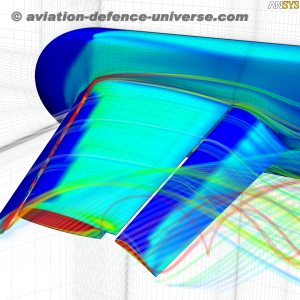
Maintenance is a huge dent when it comes to aircraft operating costs, flight delays and cancellations. Companies need to keep assets operationally available while cutting maintenance, repair and overhaul (MRO) costs.
The enormous amount of data captured through sensors and advanced analytic techniques have opened a view into insights around operations, product performance and customers that were never explored before. Engineering simulation tools speed innovation, improve reliability and durability, and provides insight for product teams designing IoT devices. These real time data can be used to find product performances and operations. In many places data only talks about what is happening to the system but simulation gives further insight and also explains why it’s happening. This fusion of data coming from both the sources are helping engineers and scientists to make appropriate decisions. Engineering simulation augments the development of next generation artificial intelligence and machine learning.
From developing complex software that controls brakes to understanding ice formation on wings, Ansys helps balance cost and time concerns. By creating and verifying their innovations in a safe virtual world, A&D leaders can have the utmost confidence that their designs will deliver the expected benefits, while also supporting secure and comfortable transportation of passengers. Modelling and simulation continue to support development of innovative A&D technologies and deliver solutions in a rapid and cost-effective manner.
ADU. What is the role of Simulation in Aerospace Design and Product Development?
LS. Simulation optimizes A&D engine designs with scalable combustion and turbulence models. Shortened design cycles and sensor placement limitations prevent aerospace engineers from relying on physical testing. As a result, aerospace engineers use computational fluid dynamics (CFD) and chemistry solvers to develop the next generation of aircraft engines. Ansys’ Combustion portfolio is well suited to these multiphysics simulations. The software’s high-performance computing (HPC) scalability enables engineers to use turbulence models like large eddy simulations (LES) on meshes with more than a million elements. It’s tedious to merge CFD meshes. Ansys’ new Mosaic meshing methodology can automatically mesh large scale models in high-lift configurations
Aerospace engineers sometimes need to visualize their simulations. Thanks to Ansys’ recent OPTIS acquisition, they can integrate visualizations with virtual reality and can explore and validate cockpit designs and other aerospace HMI.
Concept design is the key for aerospace designers. The sooner the engineers make informed decisions about their products, the fewer changes in designs they will need later in the development cycle. This is where Ansys Discovery Live provides simulation insights in real time.
Electrification is another major initiative in the aerospace industry mainly towards reducing emissions. Electric aircrafts will help engineers amplify their designs and implement new features like the IoT and digital twin. Electrification also created new challenges to these designers about issues that was completely absent on the conventional aircraft design.
Ansys’ multiphysics solutions will play a key role in the implementation of aerospace electrification. These multidomain tools allow engineers to design and optimize key components, including Batteries, Fuel cells, Inverters, Motors, Actuators, Bus bars and Cables.
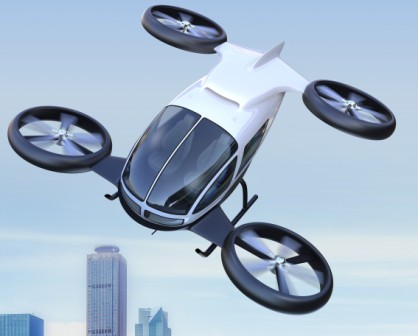
ADU. What are the 3D (Additive Manufacturing) opportunities in A&D ? Please elaborate on their advantages and challenges ?
LS. A&D is the early adopter when it comes to Additive Manufacturing as well. There are numerous advantages of 3D in A&D like reduced cost and time to manufacturing, light weighting, waste minimization and also the manufacturing of complex-design products. Additive manufacturing can build novel geometries that were not possible to create using traditional methods. They can also produce low volume parts without investing in specialized tools. All these will augment Aerospace & Defense 4.0.
Some of the challenges of Additive Manufacturing are material science, minimal previous experience, limited available expertise and also the traditional manufacturers being hesitant to adapt this technology. Engineers who implement 3D printers need to learn how to ensure their designs are built properly. Ansys’ Additive Suite offers engineers an end-to-end design solution for metal additive manufacturing. It enables engineers to calculate deformations and stresses during the printing process. This data helps them optimize their geometry to print correctly the first time itself. Scientists and engineers can now gain insight into the microscale meltpool phenomena by performing full factorial studies with various process parameters.
ADU. Autonomous and connected Aircraft will change the face of air mobility. Comment.
LS. With more drones dominating the skies and autonomous passenger aircrafts approaching take off, simulation in A&D’s only option for ensuring passenger and vehicle safety. Currently, the drone can make some decisions, but a certain level of human supervision is necessary. Autonomous drone technologies will need to be designed, tested and trained to ensure public safety. It would need simulation models of environments, cities and weather conditions that the UAV might face. By tweaking each simulation, we can test, optimize and certify the safety of autonomous technology faster than we ever could using physical prototypes.
The future of air mobility is dependent on simulation-based design exploration to reduce the costs and risks of innovation. To make this technology fully autonomous, we have to overcome a few challenges to ensure drones meet local laws, regulations, air/road traffic conditions and safety standards. These challenges pertain to designing, testing and certifying sensors, radar and cameras able to observe any environment the drone may encounter, particularly in adverse weather. It also needs to ensure that developing, testing and certifying software that is functionally safe and secure. There must also be an increase in travel distances and carrying capacity by improving aerodynamics, reducing weight and increasing battery or propulsion system performance. Simulation will play a critical role in addressing these challenges by helping to optimize individual parts and certify whole systems.
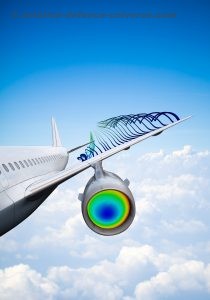
Delivering the on-board connectivity demanded by passengers and safely automating the cockpit of the future require a no-margin-for-error design testing. Ansys has simulation solutions for next-generation aircraft span sensor and antenna design, head-up display development, electronics reliability, functional safety analysis and virtual closed-loop environments for autonomous vehicle validation.
Simulation can also be used to optimize, verify and certify camera, lidar, radar and other sensor performance, verify and certify software logic and AI systems, test the link between sensors, software and virtual worlds, perform functional safety assessments with software, AI and sensors in the loop, create lightweight components and optimize battery, motor and electric propulsion performance.
ADU. What are the trends and latest technologies in the A&D sector across the globe?
LS. Trends in the A&D industry are mainly driven by social, political and technological changes. Environmental regulations, fuel costs and advances in batteries, sensors and connectivity are some factors and they are all leading to the development of autonomous, efficient and more electric aircrafts.
Among the trends, the green trend or producing environmentally friendly aircrafts is a top one. Engineers can use computational fluid dynamics (CFD) to reduce a design’s drag, incorporate lightweight materials, like composites, into designs, take advantage of optimized topology and lattices with additive manufactured parts, improve the materials, control software and designs of propulsion systems and design and integrate hybrid and fully electric propulsion systems in order to achieve this.
There is also the need to design automated and connected aircrafts. This has already been covered above. Much of the research to develop these automated and connected tools will funnel into sensor, logic and safety systems. Ansys’ pervasive simulation technology can digitally connect, test and validate these systems in a virtual environment. These simulations will speed up development and ensure that autonomous vehicles can handle any weather or emergency situation.
One of the biggest existential trends affecting the A&D industry is its growing complexity and the strain it puts on engineering productivity. Keeping track of these changes, let alone the advances in electronics, antennas and sensors, is taxing. One solution is to train and acquire new technicians, engineers and experts. However, a large number of A&D professionals are retiring before they can train the next generation. Simulation can help the A&D industry keep up with this trend by automating various functions. This way, engineers can pass on their knowledge and simplify processes.
Some aircrafts in service today that are older than the maintenance, repair and operation (MRO) teams working on them. Ensuring that those teams can maintain those designs takes considerable effort. One of the fastest ways for A&D start-ups and leaders to navigate this is with simulation technology. With simulation, the A&D industry can quickly iterate designs, ensure product safety, hasten certification and simplify systems.
The industry is looking to improve engineering productivity, fuel efficiency, autonomous/connected aircraft, MRO and much more. Simulation accelerates Defense technology. Relying on simulation instead of manual testing saves millions of dollars and hundreds of thousands of work hours.
ADU. What is the business focus of Ansys in India and how do you see Asia as a market?
LS. Leading companies around the world leverage the power of Ansys software to develop next-generation aircrafts, space vehicles, and cutting edge technologies such as unmanned systems using multi-disciplinary optimization and model-based engineering. Ansys offers the aerospace and defence industry physics based simulation solutions that are capable of addressing the entire breadth of applications without compromising on Accuracy, Robustness and Speed. Ansys simulation framework support, training and services are recognized as key enablers for maximizing the return on investment in physics based engineering simulation. A number of key modelling and simulation best practices are required to enable improvements to the product development process.
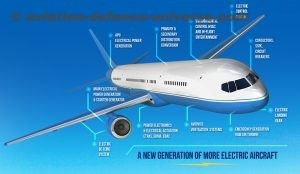
Ansys’ deepest yet broadest suite of simulation tools available in an integrated working environment that is Ansys Workbench effectively executes an efficient multiphysics simulation. Ansys helps leading aircraft engineering teams to overcome the challenge of designing radomes and other composites structures. Ansys Composite PrepPost (ACP), a module in Ansys Workbench, enables engineers to import a radome model and perform ply stacking, draping and fibre orientation in an intuitive virtual design space. They can determine where composite layers should start and stop as well as design appropriate transitions between thick and thin material sections.
Recent technology advancements in Ansys HFSS take advantage of high performance computing resources and novel numerical methods, making it faster and easier to solve large problems. By linking Ansys HFSS and Ansys Mechanical, engineers can confidently predict electrical performance under varying thermal and structural loads, a solution that seamlessly brings together electromechanical, thermal and structural analysis for the first time.
Ansys Mechanical is invaluable for studying the structural strength and durability of promising new materials that may withstand higher combustion temperatures. Coupled with Ansys CFD software, Mechanical helps engineering teams analyse the effectiveness of engine cooling systems via a multiphysics approach. Ansys is committed to helping the A&D industry realize its product promise.
Ansys’ major focus is on Skill development of the engineers and scientists. There have been many COE [centres of excellence] developments in the region in connection with the same. Ansys also enables SME and MSME teams to deliver products that are better, more efficient, faster and cheaper. Ansys also enters multiple academic collaborations to support complex physics. More than one fourth of Ansys’ total business is in India.




































